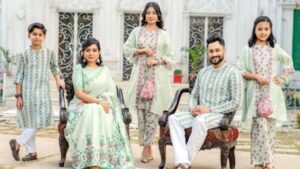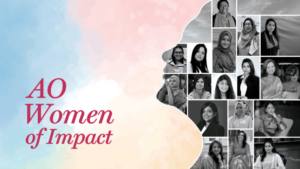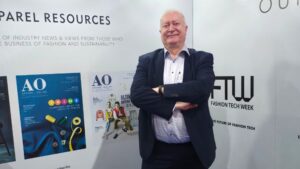As the competition in the industry intensifies, there is an increased focus on effective monitoring and management of product development in the RMG sector. Building a product development team requires substantial investment. However, it provides a new user experience, addresses needs, offers solutions to problems, broadens a company’s customer base and market share.
Serving as middlemen between suppliers and retailers, buying houses play a crucial role in the apparel industry. They help buyers to identify and evaluate suppliers. Approximately 850 out of 1,500 member buying houses are actively engaged in operations within Bangladesh, states Bangladesh Garment Manufacturers and Exporters Association (BGMEA).
There’s a trend amongst them: product development. According to Bangladesh Garment Buying House Association (BGBA) data, in the last fiscal year alone, buying houses facilitated US $ 8 billion in garment export orders. Product development is essential for building customer loyalty and staying ahead of the competition. It’s also important to ensure customer satisfaction and reduce the risk of returns. It’s the process of setting seasonal goals, brainstorming, creating, executing, researching market and trends, bringing new products or services to consumers, improving on existing ones, developing new product styles through technical design, creating product samples to complete product styles with standardisation, selling the line and displaying the line. In short, it’s complex and time consuming.
As the competition in the industry intensifies, there is an increased focus on effective monitoring and management of product development. In today’s highly competitive market, any buying house will not be able to survive without having a well-coordinated product development team, says Kazi Iftequer Hossain, Total Apparel’s CEO and former President of the Bangladesh Garment Buying House Association (BGBA). He further adds, “A good product development team strengthens the relationship between the buyer and the manufacturer and makes it more enduring.”

Kazi shares how his experience in South India, where he was sent to learn about textiles and fabric patterns, inspired his perspective on the product development process. In 2000, he established his own team for product development. Currently, his company has a team of specialists dedicated to fabric sourcing and design, who regularly visit fairs to discover new fabrics. He mentions that their primary clients are American and European retailers.
4M Sourcing Ltd., a prominent company specialising in apparel sourcing, buyer representation and garment exporting, has an R&D team of 4-5 people dedicated to product development, according to Mohammad Minhazur Rahman, the Managing Director. Mohammad emphasises the importance of staying updated on trends by continuously working on sourcing and designs. He asserts that an internal product development team is essential for the company’s longevity as it enables the creation of designs tailored to customer requirements. In today’s market, buying houses such as Famglam Ltd., Trust Maker International, Total Apparel, AVS Fashion, Knittexpo Sourcing Limited and others have also established their own product development teams.
| It’s also important to ensure customer satisfaction and reduce the risk of returns. It’s the process of setting seasonal goals, brainstorming, creating, executing, researching market and trends, bringing new products or services to consumers, improving on existing ones, developing new product styles through technical design, creating product samples to complete product styles with standardisation, selling the line and displaying the line. In short, it’s complex and time consuming. Kazi Iftequer Hossain, Total Apparel’s CEO and former President of BGBA |
New trajectory success
A clearly defined product development plan encourages cooperation and collaboration amongst different departments within a purchasing organisation. It facilitates seamless teamwork from design and sourcing to production and quality control, ensuring that final products meet aesthetic, functional and market requirements. According to Md Zakaria Abu Jafar, Managing Director of Creative Export & Accessories Ltd., a buying house focused on exports, a robust product development strategy can pave the way for a new era of success. Various functions such as material requirement planning, inventory control, production planning and scheduling, quality control, logistics and finance are integral parts of this process. Md Zakaria notes that while such advancements were once inconceivable in Bangladesh, there is now a glimmer of hope. Mohammed Tareaquzzaman, Managing Director of Indesore Trading Ltd., a subsidiary of Indesore Group, highlights the presence of an in-house product development team comprising both local and international experts from the UK, US, France and other countries. Tareaquzzaman mentions that 90 per cent of their designs contribute to 80 per cent of their overall turnover.
Challenges
Lack of a reputable academic institution and talented individuals remains a challenge in the area. Additionally, cost presents another barrier for some. Several educational establishments in the nation currently offer fashion design courses. However, Md Zakaria advocates for an expansion of these programmes to enable locals to design and present to international buyers without relying on external talents.
Kazi states that his company places significant emphasis on product development, leading to profitable returns. Despite this, he expresses disappointment in the country’s lagging position compared to others. He highlights the strength and competitiveness of foreign RMG teams with their abundant resources and strong government backing. Stressing the importance of government support for research and development, Kazi believes that if similar subsidies were available locally, the nation could reach the same level of advancement in R&D and product development as other countries.
Building a product development team requires a substantial investment, covering expenses such as design conception, prototyping and testing. Balancing creativity and cost is crucial for many, leading companies to focus on creating diverse teams comprising both foreigners and locals to optimise results. However, it provides a new user experience, addresses needs, offers solutions to problems, broadens a company’s customer base and market share. Moreover, retailers and brands are given the option to select designs without dedicating time and resources to product development.







